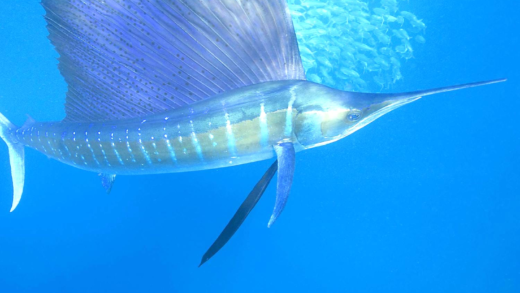Giant fish, like the whale shark, face myths about their danger and agility. Conservation efforts are crucial due to threats like overfishing and habitat loss. Local cultures celebrate these fish, impacting economies through ecotourism. Understanding their unique reproductive habits is vital for preservation.
Giant Fish Overview: Meet the Biggest Players in the Ocean
The largest fish in the ocean are truly impressive creatures that dominate the aquatic world. These giants include species like the whale shark and the basking shark, which can grow to lengths of over 40 feet. Understanding these magnificent fish is essential, as they play significant roles in their ecosystems.
Whale sharks, for instance, filter feed on plankton, while basking sharks swim slowly through the water, also consuming tiny organisms. Their size not only makes them fascinating but also crucial for maintaining the balance in marine environments. Without these giants, the delicate food web could be disrupted.
Adaptations for Survival: How These Giants Thrive in Their Environments
Giant fish have developed unique adaptations that allow them to thrive in their respective habitats. For example, the whale shark possesses a specialized filtering system in its mouth, enabling it to consume vast amounts of plankton efficiently. This adaptation is vital for their survival in nutrient-rich waters.
Another adaptation is the basking shark’s enormous gills, which help it extract oxygen from water. These adaptations not only enhance their feeding capabilities but also ensure their survival against predators. Understanding these traits reveals how giant fish have evolved to fit into their ecosystems.
Habitats of Giant Fish: Where Do They Call Home?
The habitats of giant fish vary significantly, ranging from warm coastal waters to deep oceanic realms. Whale sharks are often found in tropical and warm-temperate seas, where they can easily access their planktonic food sources. Conversely, basking sharks prefer cooler waters and can be seen near the surface.
These habitats are crucial for their survival, providing the necessary resources for feeding, breeding, and protection from predators. Additionally, understanding these habitats can help in conservation efforts, as preserving these environments is vital for the future of giant fish populations.
Interesting Behaviors: What Makes Them Unique?
The behaviors exhibited by large fish are as intriguing as their size. For instance, whale sharks are known for their solitary nature, but they can also be seen gathering in large groups during feeding times. This unique behavior highlights their adaptability and social dynamics.
Basking sharks, on the other hand, are known for their slow swimming patterns and surface basking behavior, which is believed to help them regulate their body temperature. These fascinating behaviors not only contribute to their survival but also make them captivating subjects for marine research.
Size Comparisons: How Do They Stack Up Against Familiar Fish?
The largest fish in the ocean present an astonishing contrast when compared to more common species. For instance, while a typical goldfish measures around 6 inches, the whale shark can reach lengths of over 40 feet. This size difference is not just a matter of length; it also reflects various adaptations and roles in their ecosystems.
- Whale Shark: Up to 40 feet (12 meters)
- Basking Shark: Approximately 30 feet (9 meters)
- Great White Shark: About 20 feet (6 meters)
- Common Goldfish: Roughly 6 inches (15 cm)
These measurements highlight the impressive scale of giant fish. Interestingly, their sheer size can lead to misconceptions about their behaviors. Many people assume that larger fish are less agile, but species like the great white shark showcase impressive speed and agility, debunking that myth.
The Largest Freshwater Fish: A Different Giant
When discussing giant fish, one cannot overlook the largest freshwater fish. The Mekong giant catfish can grow up to 10 feet (3 meters) long, showcasing the diversity of size within different environments. Unlike their saltwater counterparts, these freshwater giants have adapted to river systems, where currents and food availability dictate their growth and survival.
- Mekong Giant Catfish: Up to 10 feet (3 meters)
- Arapaima: Approximately 15 feet (4.5 meters)
- Sturgeons: Varying sizes, some species reach over 20 feet (6 meters)
This contrast between freshwater and saltwater giants illustrates the adaptability of these species to their respective habitats. Understanding these differences is crucial for conservation efforts, as freshwater ecosystems face unique threats.
Measuring Up: How Scientists Accurately Determine Fish Sizes
Accurately measuring the size of large fish is essential for research and conservation. Scientists employ various methods, including direct measurements using tapes and specialized equipment, as well as estimating sizes through photographic techniques. For example, underwater photography can help researchers gauge the size of fish without disturbing them.
- Direct Measurement: Using a measuring tape or laser tools.
- Photographic Estimation: Analyzing images with known reference points.
- Tagging and Tracking: Monitoring growth over time with tagged individuals.
These techniques help ensure that data on the sizes of large fish are accurate, which is vital for understanding their growth patterns and ecological roles.
Impact on Ecosystems: Why Are They Important?
The impact of large fish on ecosystems is profound. They play critical roles in maintaining the balance of marine and freshwater environments. For instance, large fish like the whale shark and basking shark contribute to nutrient cycling by filtering plankton and other small organisms. This feeding behavior helps maintain the health of marine ecosystems.
- Predator-Prey Dynamics: Large fish often sit at the top of the food chain, influencing the populations of smaller species.
- Habitat Maintenance: Their movements and feeding help aerate waters and promote healthy ecosystems.
- Nutrient Distribution: Their waste products enrich the environment, benefiting other marine life.
Understanding these roles emphasizes the need for conservation efforts. Protecting large fish ensures the stability of entire ecosystems, highlighting their importance beyond just their size.
Myths and Misconceptions: What Do People Get Wrong About Giant Fish?
The largest fish in the ocean are often surrounded by myths and misconceptions. One common belief is that giant fish, like the whale shark, are dangerous to humans. In reality, these gentle giants primarily feed on plankton and pose little threat to swimmers. Another myth is that larger fish are less agile. Species such as the great white shark demonstrate incredible speed and maneuverability, which contradicts this assumption.
People also often confuse size with species behavior. For instance, while a basking shark may appear intimidating due to its size, it is a filter feeder, not a predator. This misunderstanding can lead to fear and misinformation about their role in the ecosystem. Addressing these myths is crucial for fostering a better appreciation of these magnificent creatures and their importance in maintaining marine biodiversity.
Threats and Conservation: Protecting Our Ocean Giants
The threats to giant fish populations are numerous and concerning. Overfishing remains a significant issue, as many large fish are targeted for their meat and fins, leading to drastic declines in their numbers. Habitat loss due to climate change and pollution further exacerbates the situation, making conservation efforts essential.
To combat these threats, various conservation initiatives are in place. Marine protected areas (MPAs) have been established to safeguard the habitats of giant fish, ensuring they have safe breeding and feeding grounds. Additionally, organizations are working to raise awareness about the ecological importance of these species, promoting sustainable fishing practices. Protecting giant fish not only benefits their populations but also supports the health of entire marine ecosystems.
Giant Fish in Culture: Their Significance in Local Communities
The role of large fish in local cultures is significant, often intertwined with the livelihoods of coastal communities. For example, in many regions, giant fish are symbols of strength and resilience, celebrated in local folklore and traditions. The whale shark, for instance, is revered in cultures where it is found, often regarded as a guardian of the sea.
Moreover, large fish contribute to local economies through ecotourism. Whale shark watching tours have become popular in places like the Philippines, bringing in revenue while promoting conservation awareness. This economic incentive encourages communities to protect these majestic creatures rather than exploit them. Overall, understanding the cultural significance of giant fish highlights the need for their preservation, ensuring future generations can appreciate their beauty and importance.
Reproduction Facts: How Do They Breed?
The reproduction of giant fish is as fascinating as their size. For instance, whale sharks are ovoviviparous, meaning they give birth to live young after the eggs hatch inside the mother. This unique reproductive strategy ensures that the young are fully developed and ready to survive in the ocean. In contrast, basking sharks are known to have a lengthy gestation period, potentially lasting up to three years.
Understanding the reproductive habits of these giants is crucial for conservation efforts. Many large fish species have low reproductive rates, making them vulnerable to overfishing and habitat loss. Protecting breeding grounds and ensuring safe environments for these fish during their reproductive cycles are essential steps in maintaining their populations. Knowledge about their breeding behaviors can help inform strategies to safeguard their future.





Comments are closed.